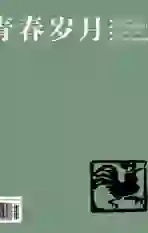A strategy in word memorizing based on Cognitive views of learning theory
2016-05-14王赵丽
Abstract:Words memorizing is the basis of second language learning. Most students have difficulties in reciting English words and teachers dont have an effective way to teach students how to memorize words. Cognitive views of learning theory focuses on the use of memory, thinking and reflection to obtain and maintain knowledge. This paper states a strategy in word memorizing based on the Cognitive views of learning theory, hoping to give some instructions to teachers and students.
Key words:Cognitive views of learning theory; word memorizing; strategy
1. Introduction
Having a wide vocabulary is the foundation of second language learning. However, most students feel desperate when they memorize English words, because it is very boring and it seems very easy to forget the words which they have already recited many times. Therefore, a good word memorizing strategy is needed for students. Cognitive learning is the process of obtaining and maintaining knowledge through perception, attention, memory and a series of internal psychological activities. It focuses on the use of memory, thinking and reflection that are not reflected in overt behavior changes. Based on the cognitive learning theory, I developed an interesting and effective way to teach students how to memorize English words. There are some steps that need to be done in order to apply this method.
(1) Draw students attention (encoding)
There are a number of theories of memory, but the most common are the information processing explanations (Hunt&Ellis,1991; Sternberg,1999). Information processing views of memory use the computer as a model. Processing involves encoding (gathering information), storage (holding information) and retrieval (getting at the information when needed). To begin with the process of memory encoding, one has to attend to the information. Attention is the very first step for any leaning endeavor. Teachers must first be able to gain and maintain their students attention.
Based on this point, I developed a way to memorize words which is interesting enough to catch students attention. The basic idea is making up interesting stories for each word. For example, the word “dedicate” means to give a lot of your effort to a particular activity because you think it is important. First, separate this word into two parts which are dedi and cate. Second, you can see that dedi sounds like daddy and cate sounds like cake. Then, make up a story that our daddy works very hard to earn cakes for us; he dedicates himself to supporting our family.
(2) Help students hold more English vocabularies (storage)
There are three types of memory that vary according to their time frames, which are sensory memory, short-term memory, and long-term memory. Long-term memory is a type of memory that holds enormous amounts of information for a long time in a relatively permanent fashion. According to this memory theory, what we need to do is to enhance long-term memory. First, let students repeat the information again and again to prevent it from fading and provide practice on newly learned knowledge over an extended period of time to increase the chances that the knowledge will be retained. Besides, change the location of English words in a vocabulary book, because students tend to remember the beginning and the end but not the middle of a list. For instance, transfer 20 words randomly from a vocabulary book to a piece of paper and then post it on anywhere in the room, such as wall, mirror, door and so on.
(3) Tell students to retrieve prior words when learning new words (Retrieval)
When we need to use information from long-term memory, we search for it, which is called retrieval. Retrieval of prior information can not only help deepen and enhance the long-term memory, but also help learn new information. This theory is well applied in this word memorizing strategy. For example, when teaching students a new word, teachers should help students associate the new word to a related word or word root she already understood: “subtract derives from the same word root as contract, which is ‘tract.”
(4) Teach students how to apply this strategy independently
Strategy instruction requires that teachers model appropriate learning strategies frequently. They need to provide students with opportunities to practice using the strategy, guiding their attempts to do so until they can carry out the strategy independently (Woloshyn, Elliot, & Kaucho, 2001). Therefore,firstly, tell students how to use the strategy step by step. Secondly, give students some tips for this strategy. Like, word roots, prefix, suffix and short words need to be learned by rote, such as “ass, tract, form…”. Learn new vocabularies by retrieving those words and roots you knew and do practice as much as possible.
2. Conclusion
Learning to use strategies effectively takes time and motivation. Initially many students require substantial time and extensive guidance and support to learn how to execute the strategies. Once students have demonstrated proficiency in the use of one strategy, they can be introduced to another. Therefore, continuous guidance and support in students study of this strategy is indispensable. In the end, this paper is intended to give some instructions for teachers and students on English word memorizing bases on the Cognitive views of learning theory.
【References】
[1] Educational psychology. 孟令坤. 東北师范大学, 2008.
[2] Educational Psychology: A Cognitive View (2nd Ed.).D Ausubel,J Novak,H Hanesian , 1978.
[3] Educational psychology: A cognitive view. 2nd ed.ES Yalow,ES Yalow - Psyccritiques, 1978.
【作者简介】
王赵丽(1991—),女,汉族,河北邢台人,天津外国语大学研究生学院硕士研究生,主要研究方向:国际商务英语。
